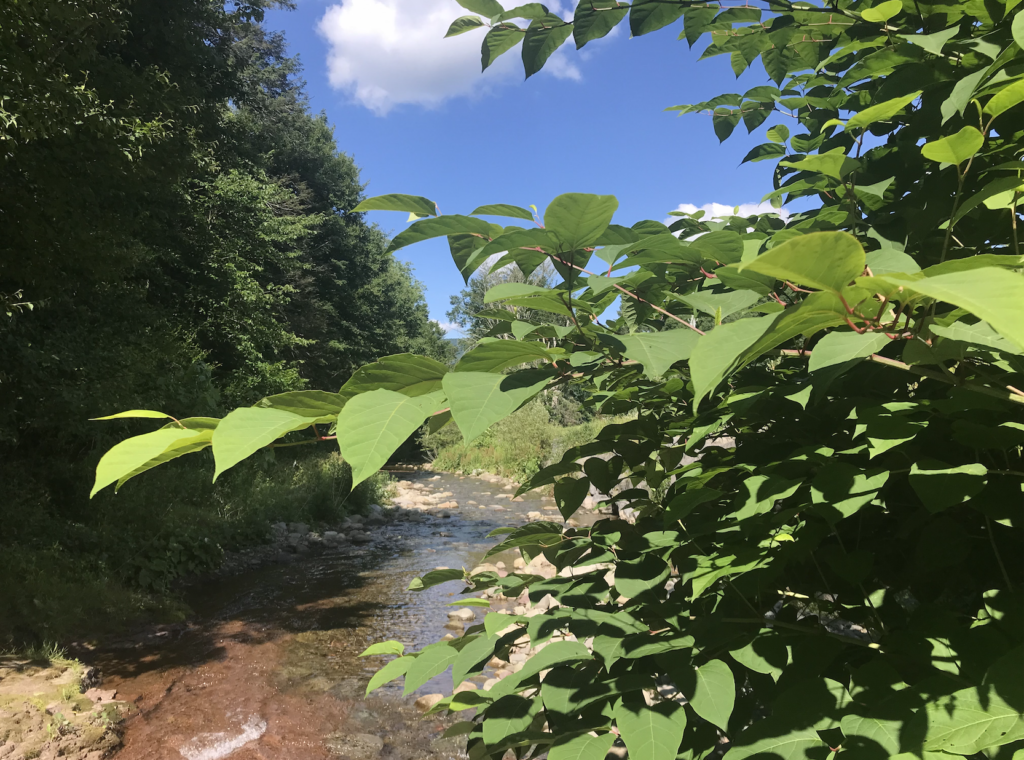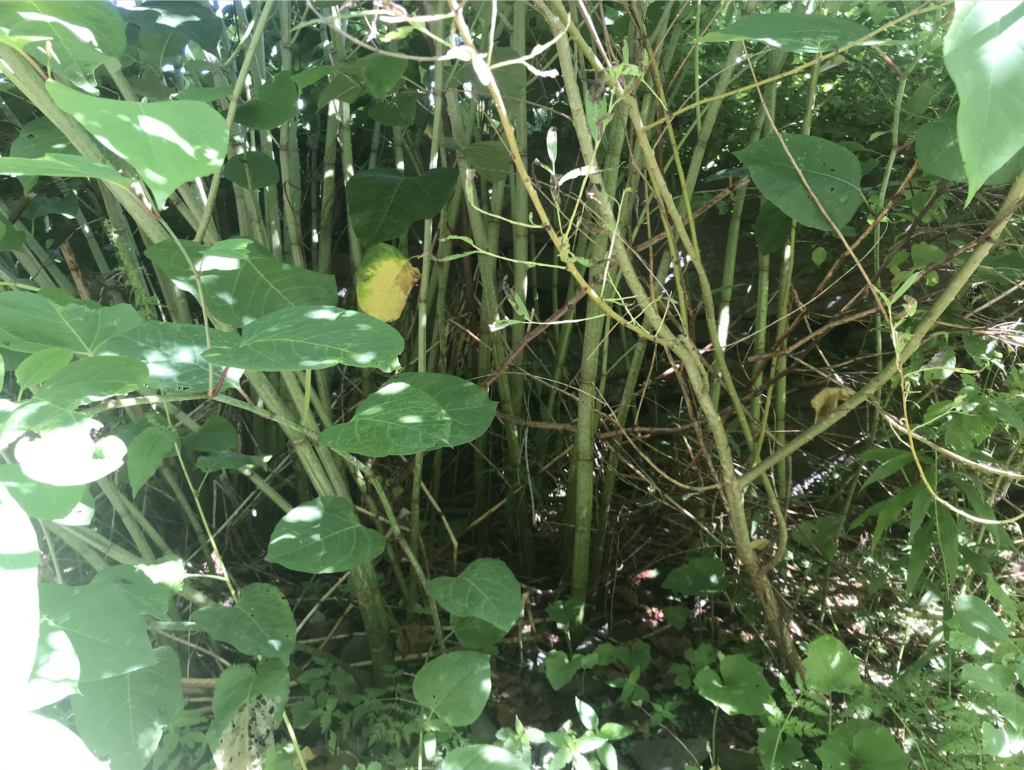
When I first began to explore Jake’s farm, Lazy Crazy Acres, in that winter of 2020, I noticed what looked like old, dead bamboo by the river – very tall beige rods with those distinctive horizontal ridges – but it was actually Japanese Knotweed, a member of the buckwheat family. This imported Japanese ornamental is everywhere and is as exceptionally difficult to eradicate as any living pest like the emerald ash borer or hemlock wooly adelgid. It’s a problem because it’s so incredibly voracious, growing by feet in a day, and its roots can destroy the foundation of a house. The stems can grow up to 15ft tall, and they block natural light for any other plant beneath it. The plant quickly takes over large areas and smothers everything on the forest floor below and disrupts wildlife habitats. It has beautiful large spade-shaped leaves with their deep blood-red stems, all shooting from hollow green bamboo-like rods.
However, the early growth shoots are also highly edible, making a good stand-in for rhubarb. You can use it to add crunch to salads and soups; mix it with other fruit to make cakes, sorbet, ice-cream, and even knotweed wine. As a novice forager, I decided to avoid knotweed because many home-owners douse it in glyphosate every year and the whole point of foraging is to avoid chemicals. However, no glyphosate has ever been used on the knotweed at Lazy Crazy Acres, so I’m free to harvest as much as I’d like.
Typically growing in the rocky areas by streams, it is ironically drought tolerant. In the four years since I met Jake, he’s gained three or four patches along his stream and I have mapped each patch and will go back to it next April.
Once you notice knotweed, you realize that it’s everywhere and it’s exasperating everyone because it’s easy to propagate even when you try to remove it. It reproduces by seed and rhizome and seems to travel via the rivers. I know people who have put black plastic over it, just to watch it poke holes in the plastic and grow unabated. One acquaintance I spoke to this year, covered her patch in corrugated metal sheeting fixed to the ground with long stakes hammered into the soil, but it still took years for the plant to die.
I’ve recently discovered a new method that has come to light. Some specialist companies are producing a strong steel mesh to cover the plant before it sprouts in the spring. The new shoots grow through the little square gaps in the mesh and are then girdled by the mesh. Girdling is where the stem is cut all the way around, killing the stem, stopping the growth of leaves, starving the stem of light and preventing flowers from growing. This eventually causes the roots die, but reportedly takes five years.
An added bonus, chefs in Manhattan reportedly (in 2016) value knotweed as much as they do ramps and fiddlehead ferns, so perhaps there’s a market for this knotweed next year.
A common problem with foraging all sorts of foods is over-harvesting, but there’s no danger of that with this plant.
Watch this space.
Knotweed undergrowth:

As a person who tries to fish our rivers every day, I have noticed this plant taking over our rivers and access paths. I’m not thrilled about that. On the other hand, much of the shade-making habitat has been ruined over the past few hundred years, resulting in higher water temperatures which is not good for trout, so I guess I am kinda OK with the shade provided from Knotweed leaves, however if it disappeared tomorrow and never came back, I’d be OK with that. Here’s to encouraging knotweed on your next menu. (it seems that young shoots are desired, not mature stems which are woody and tough and look a lot like mature bamboo. I cannot express just how fast this plant grows. From nothing in April to a 12′ hedge by June (building on last year’s roots). Those I’ve seen eat it only harvest in April I think? I may be wrong about that.